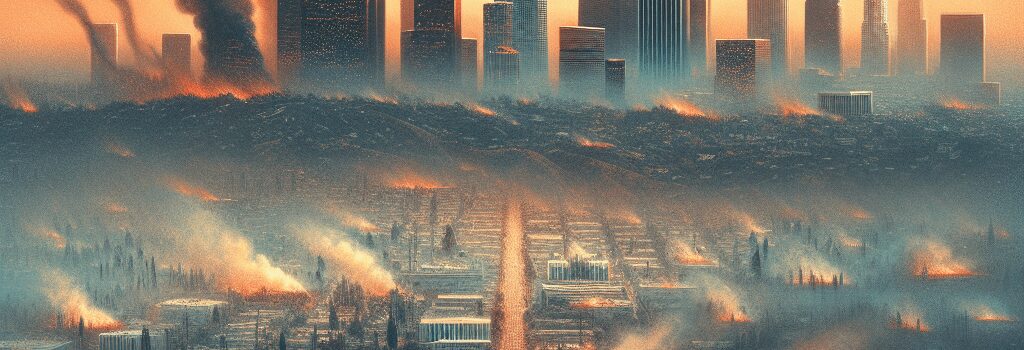After LA Fires: The Lingering Toxic Legacy

In the wake of the recent wildfires that swept through Los Angeles County, researchers have launched a comprehensive campaign to assess the persistent toxic hazards in areas that apparently escaped direct burning. Leveraging state-of-the-art analytical instruments, advanced sensor networks, and modeling techniques derived from AI, scientists aim to map contamination in air, water, soils, and building surfaces over months and even years.
Introduction
While charred landscapes and ash-covered neighborhoods receive immediate attention, the invisible threats—semivolatile organic compounds (SVOCs), polycyclic aromatic hydrocarbons (PAHs), heavy metals, and ultrafine particulates—can migrate beyond fire perimeters. This study draws upon protocols standardized by the U.S. EPA (Method 8270D for GC-MS, Method 6020B for ICP-MS) to quantify contaminant concentrations down to parts-per-billion (ppb) levels.
Sampling Protocols and Technical Specifications
Air Quality Monitoring
- Instrumentation: Mobile sensor nodes equipped with metal-oxide semiconductor (MOS) sensors, optical particle counters (OPC), and reference-grade monitors (TEOM 1405, BAM 1020).
- Parameters: PM2.5/PM10, VOCs (benzene, toluene, xylene), nitric oxides (NOx).
- Detection limits: 0.1 µg/m³ for particulates; 1 ppb for VOCs via GC-MS analysis.
Water and Soil Analysis
- Water Sampling: Collection at surface and groundwater wells; analysis for heavy metals (lead, arsenic), perchlorates, and PAHs using inductively coupled plasma mass spectrometry (ICP-MS) with detection limits of 0.5 µg/L.
- Soil Testing: Core sampling at depths up to 30 cm; accelerated solvent extraction (ASE) followed by GC-MS/MS to quantify residual SVOCs and chlorinated compounds.
- Surface Wipe Tests: ASTM D6661 standard for collecting settled particulate matter on household surfaces; analysis for flame retardants and dioxins.
Advanced Monitoring Techniques
To enhance spatial coverage and temporal resolution, teams have deployed drone-borne LiDAR and hyperspectral sensors. Real-time telemetry streams feed into a cloud-based platform built on AWS IoT Core, storing terabytes of data. Machine learning algorithms—trained in TensorFlow—perform anomaly detection to flag hotspots where contaminant levels exceed EPA screening benchmarks.
Key Findings and Health Risk Assessment
Initial results indicate that zones up to 5 km from the fire footprint show elevated PAH concentrations—up to 150 ng/m³ in outdoor air—and lead levels in soil reaching 400 mg/kg, surpassing California’s safety threshold of 80 mg/kg. Indoor air monitoring within non-burned homes still reports benzene peaks of 5 ppb during cleaning activities. Toxicologist Dr. Marina Alvarez warns:
“Chronic exposure to these compounds, even at low concentrations, can increase risks of respiratory ailments and carcinogenic effects over time.”
Policy Implications and Future Research Directions
Authorities are considering implementing mobile decontamination rinsers and air filtration units—rated MERV-16—to mitigate indoor hazards. Researchers advocate for a regional Early Warning System that integrates satellite thermal imagery with ground sensor data for rapid alerts in future wildfire events.
Emerging Technologies and Collaborative Platforms
Tech startups are piloting open-source sensor modules (part cost ~$200) that communities can self-deploy. Collaborative dashboards powered by Grafana and InfluxDB enable public access to live pollution maps. Experts foresee a role for edge computing—using NVIDIA Jetson modules—to preprocess data and reduce cloud telemetry costs.
Conclusions
This multidisciplinary approach—combining environmental chemistry, IoT hardware, cloud analytics, and AI modeling—offers a blueprint for post-fire hazard assessment worldwide. Continued monitoring, public engagement, and data-driven policy will be key in mitigating the invisible threats that linger long after the flames have died down.